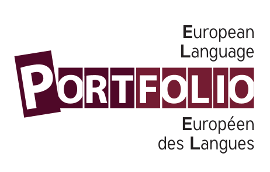Guide to compiling an ELP
What is the European Language Portfolio?

It is a document in which those who are learning or have learned a language - whether at school or outside school - can record and reflect on their language learning and cultural experiences.
Its main aims are:
- to help learners give shape and coherence to their experience of learning and using languages other than their first language
- to motivate learners by acknowledging their efforts to extend and diversify their language skills at all levels
- to provide a record of the linguistic and cultural skills they have acquired (to be consulted, for example, when they are moving to a higher learning level or seeking employment at home or abroad)
In a European Language Portfolio (ELP) all competence is valued, regardless whether gained inside or outside of formal education. In addition:
- The ELP is the property of the learner
- It is linked to the Common European Framework of Reference for Languages (CEFR)
- It conforms to a common set of Principles and Guidelines that have been approved by the Committee of Ministers to Member States concerning Modern Languages (see Recommendation N° R (98) 6).
The components of an ELP
All ELPs are divided into three parts:
Learners can use each of these according to their particular needs in their different learning contexts. The three different parts do not have to be placed in the order above.
All ELPs adhere to terminological conventions and standard headings and rubrics as specified by the Council of Europe.
The headings and rubrics must be presented in at least one of the official languages of the Council of Europe (English or French) in addition to any other languages.
This means that all ELPs are required to use:
- the titles European Language Portfolio/Portfolio européen des langues, Language passport/Passeport de langues, Language biography/Biographie langagière and Dossier
- the common reference levels and skills of the Common European Framework of Reference.
- English and/or French in addition to any other languages for the key headings in the three parts.
Compiling an ELP
It is now possible to put together an ELP model using the set of Templates and resources supplied by the Council of Europe. Before selecting from the templates and resources, however, you are advised to read the following notes on the ELP in general and its three parts.
Before embarking on the development of a new model, you should consider the needs of your particular target group of learners and check that there is not an existing model that you could use or draw on.
You should consider the following points in relation to the needs of the target group and the educational context in which the model is to be used:
- the age of the learners (with consequences for the design of the model, the language of the instructions, etc. and the examples given in the checklists, etc.)
- the context of learning (with consequences for the way you treat formal and informal learning, the checklists, the types of reflective task, etc.)
- the sociolinguistic context (with consequences for your choice of languages used in the headings and instructions, the types of example and illustration you select, etc.)
Introduction to the ELP and the Council of Europe
Every ELP model must contain one of the template texts about the Council of Europe. There are two to choose from. The texts are usually placed in the Language Passport (see below).
- Text about the Council of Europe for older learners
- Text about the Council of Europe for young learners
Every model should also contain an introduction to the ELP. Developers should consider whether to use the template provided or to write their own:
Language Policy Portal
www.coe.int/lang
European Centre for Modern Languages
(ECML) - Graz, Austria



